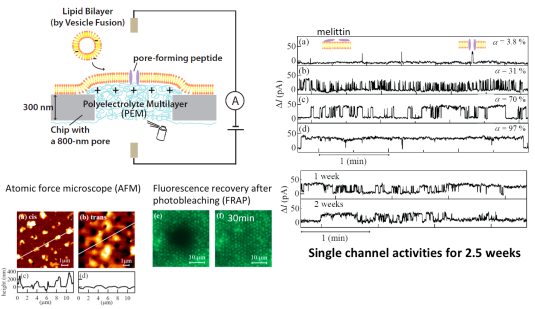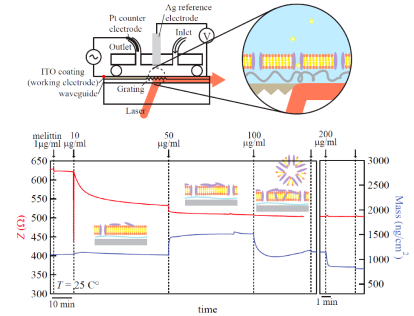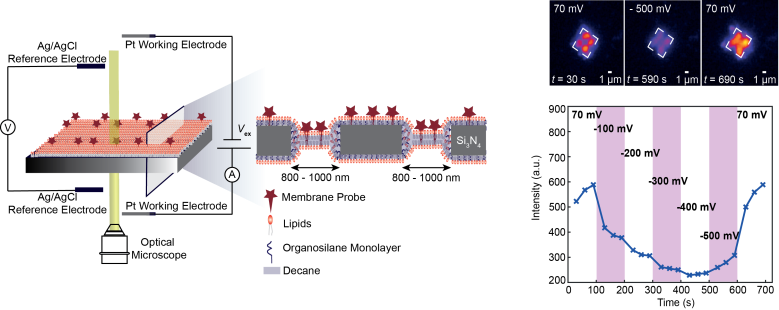Electrical properties of cell membranes

K. Sugihara, J. Vörös, and T. Zambelli, ACS nano 4, 5047 (2010) DOI
We are interested in the electrical properties of cell membranes. Our approach is to use synthetic bilayers as a model cell membrane. We have incorporated the pore-forming peptide melittin for the long time electrical monitoring of single channel activities.

K. Sugihara, M. Delai, I. Szendro, O. Guillaume-Gentil, J. Vörös, and T. Zambelli, Sens. Actuators, B 161, 600 (2012) DOI
The planar lipid bilayers are also assembled on a surface sensor where the channel activities can be studied optically and electrically simultaneously. Such combined setup provides more information than the individual method alone.
M. Tsemperouli and K. Sugihara, Nanoscale 10, 1090 (2018) DOI
We developed a platform based on lateral nano-black lipid membranes (nano-BLMs), where electrical measurements and fluorescence microscopy setup are combined, for the calibration of di-4-ANEPPS, a common voltage sensitive dye (VSD). The advantage of the setup is 1) its flexibility in the choice of lipids and the applied voltages, 2) its high stability that enables high voltage (500 mV) application and long-time measurements and 3) its fluorescence microscopy readout, which can be directly correlated with other fluorescence microscopy experiments using VSDs (e.g. membrane potential measurements in living cells). Using this setup, we observed that the calibration curve of di-4-ANEPPS is strongly dependent on the net electric charge of the lipids. The developed setup can be used to calibrate VSDs in different lipid environments in order to better understand their fundamental voltage-sensing mechanism in the future.


